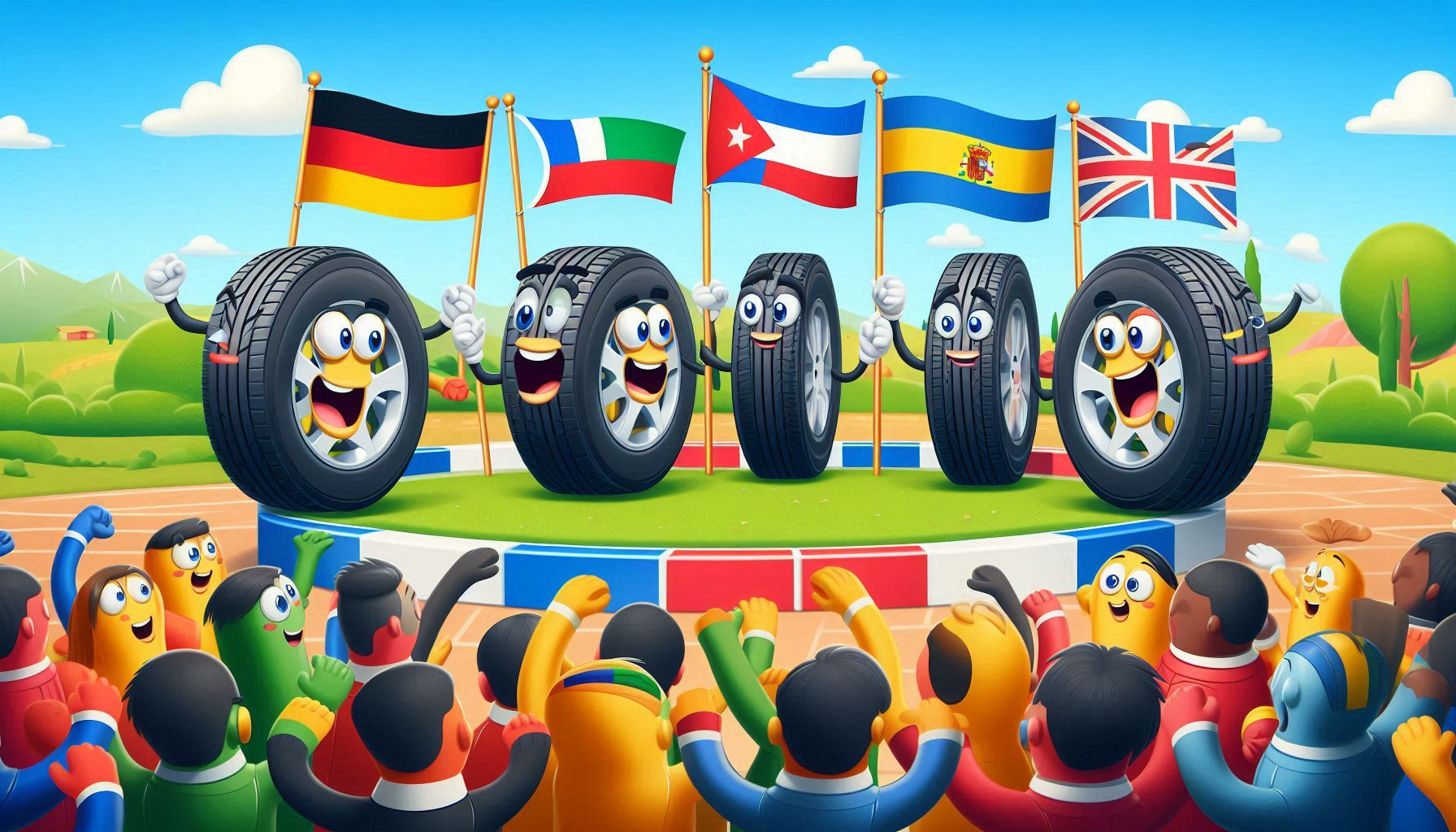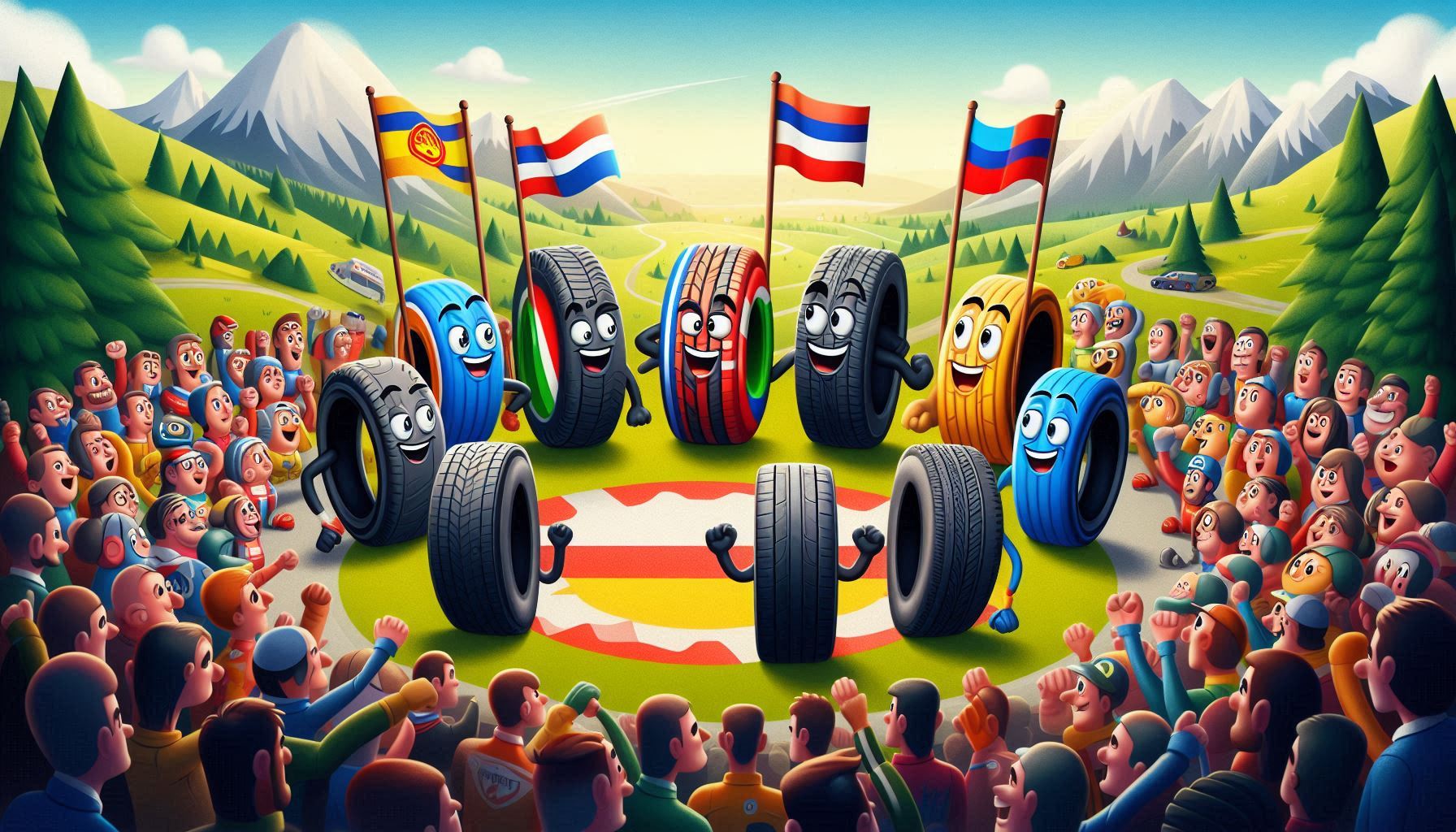
Introduction: The World’s Best Tires
Choosing the right tire for your car is one of the most important decisions every driver must make. But a question that often comes to mind is: Which country makes the best tires? In this article, we will thoroughly examine and compare tires produced in various countries and analyze the factors influencing their quality, durability, and performance.
The Importance of Country of Origin in Tire Quality
Many tire buyers focus solely on brand or price and pay little attention to the country of manufacture. However, the country of origin can be a strong indicator of the technological level, production standards, and quality control of the product. A country with a long-standing history in automotive manufacturing is more likely to produce tires that are durable, safe, and well-adapted to driving conditions.
Understanding Quality Criteria in Tire Manufacturing
Raw Materials and Production Technology
One of the most critical factors in tire quality is the type of raw materials used. Tires made with a precise blend of natural and synthetic compounds tend to offer greater durability and grip. Industrial nations like Germany and Japan employ advanced technologies to produce special compounds that resist wear, high temperatures, and cracking.
International Standards and Quality Control Tests
High-quality tires should comply with international standards like ECE, DOT, ISO, or TUV. These tests assess grip, heat resistance, durability, and braking performance. Developed countries such as the U.S. and European nations usually apply more stringent quality control tests for their rubber products.

Leading Countries in the Tire Industry
Germany: Precision Engineering for Durability
Germany, with renowned brands like Continental and Fulda, is one of the leaders in tire manufacturing. German tires typically score very high in durability, grip, and performance on wet and dry roads. Their precise tread engineering often results in a longer lifespan compared to the global average.
Japan: A Balance of Quality and Innovation
Brands like Bridgestone and Yokohama symbolize high-quality Japanese tires. The Japanese focus on tread design innovation and new material blends, producing tires that are fuel-efficient and perform flawlessly on sharp turns and under various weather conditions.
South Korea: Reliable and Affordable Brands
Korean tire brands such as Hankook and Kumho have captured global markets in recent years. These tires offer excellent quality relative to their price and are a dependable and economical choice for everyday drivers.
USA: Experience and Advanced Technology
The U.S. is a pioneer in the tire industry with brands like Goodyear and Cooper. American tires, thanks to advanced design, nano-tech applications, and robust compounds, perform exceptionally well on off-road paths and high-speed highways.
France & Italy: European Design with High Performance
Brands like Michelin (France) and Pirelli (Italy) represent the European approach to tire manufacturing. Michelin consistently ranks first or second globally, offering a unique mix of comfort, durability, and safety. Pirelli is more known in racing and sports cars, offering high performance at top speeds.
Performance Comparison of Tires by Country
Grip, Braking, and Safety
In global test reports, German and Japanese tires receive the highest scores in wet and dry grip tests—factors directly linked to vehicle safety. Korean tires have also made significant improvements in recent years.
Lifespan and Wear Resistance
Generally, tires made in Germany, France, and Japan last longer. For instance, some Michelin models can last up to 80,000 kilometers, while the global average ranges between 40,000 to 60,000 km.
Performance in Various Weather Conditions
In countries with harsh winters, using tires with compounds resistant to low temperatures is vital. Brands like Nokian (Finland) and Michelin have designed tires that perform excellently in snow and ice. Meanwhile, Japanese and Korean tires are better suited to moderate climates.
Top Brands and Their Countries of Origin
| Brand | Country of Origin | Global Rank | Features |
|---|---|---|---|
| Michelin | France | 1 | High durability, snow performance, driving comfort |
| Bridgestone | Japan | 2 | Innovative tread design, great for SUVs and family cars |
| Continental | Germany | 3 | Excellent grip, advanced engineering |
| Goodyear | USA | 4 | Nano technology, ideal for off-roading |
| Hankook | South Korea | 6 | Affordable, suitable for city driving |
Is Country of Origin Always the Best Quality Indicator?
Local Production Lines and Subsidiaries
Some premium brands have factories in multiple countries. For example, Bridgestone tires may be produced in Japan, Thailand, or Indonesia. So, it’s not just about the brand name—you should also check the actual production country.
Warranty, After-Sales Services, and Authenticity
In Iran, counterfeit tires are a common issue. Choosing authorized dealers and brands with official representation improves the chances of receiving warranty coverage and reliable support.
Buying Guide for Iranian Consumers: How to Choose Quality Tires
Prioritizing Quality Over Price
Buying cheaper tires doesn’t always save money in the long run. High-quality tires last longer and require fewer replacements, making them more cost-effective over time.
Trusted Sources for Genuine Tires
To ensure reliable tire purchases, buy from reputable online or physical stores, official brand dealers, and specialized tire shops. Check the DOT code, production date, and authenticity certificate to verify quality.
Final Conclusion: Which Country Makes the Best Tires?
The answer depends on your needs and driving style. If you want superior durability, safety, and top-tier performance, German, Japanese, or French tires are the best choices. If you’re looking for budget-friendly options with decent quality, Korean brands offer smart alternatives.
FAQs on Tire Country of Origin
-
Does the manufacturing country really affect tire quality?
Yes, it reflects the level of technology and quality control during production. -
Which is the best country for tire manufacturing?
Germany, Japan, France, and the U.S. are leading in this industry. -
Are Chinese-made tires any good?
It depends on the brand and factory. Some Chinese brands offer good quality, but overall they haven’t reached the level of developed nations yet. -
How can I identify a tire’s country of origin?
By checking the DOT code on the tire sidewall, which indicates the production plant and country. -
Are Iranian tires of good quality?
Iranian brands like Barez and Kavir are considered mid-range and suitable for city driving. -
Is production date more important than country of origin?
Both are important. An old tire—even from a reputable country—may have degraded performance.

